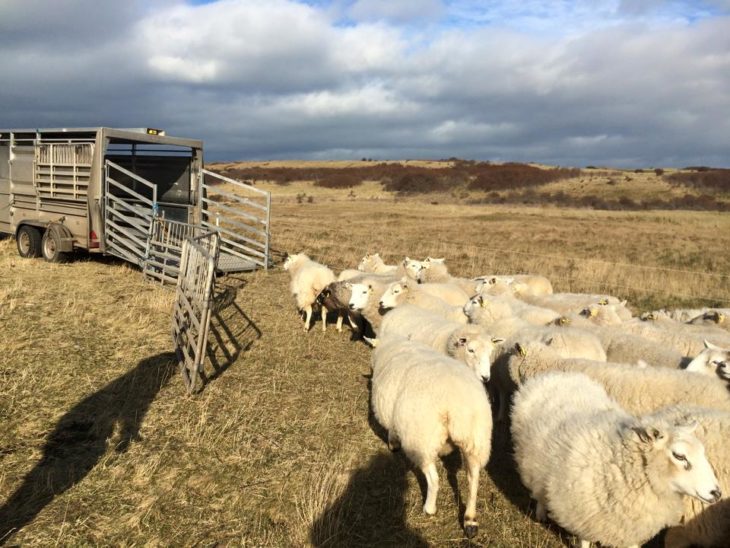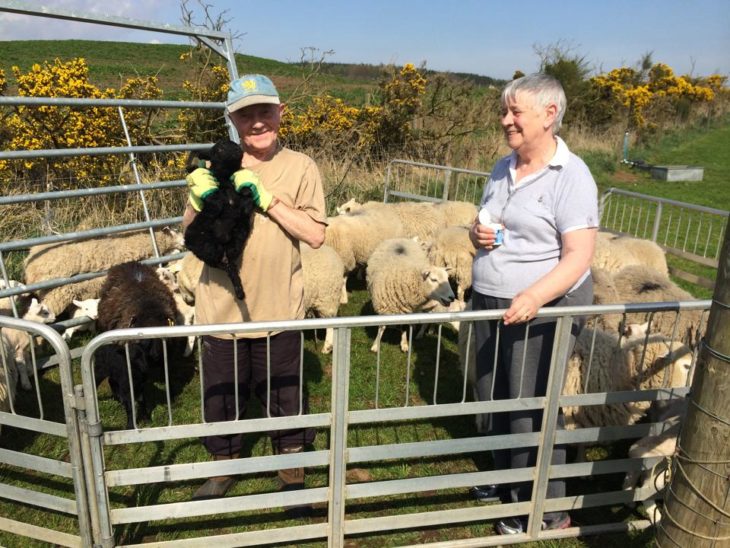During any one year over 4,000 sheep and 400 cattle will graze the Trusts land; with over 30 reserves under some form of conservation grazing regime. As well as domestic stock, horses are used on reserves where cattle or sheep are unavailable or unsuitable.
Why use livestock?
The best way maintain a high diversity of wildflowers on our reserves is with sheep and cattle. Each type of stock create different conditions for wildlife. For example at Montrose Basin in Angus, Highland ponies graze the salt marshes in order to reduce the height of the rushes and to maintain open water habitats to benefit wading birds, which are in serious decline nationally. The Trust’s vast experience of conservation grazing, both with its own livestock and working with local graziers, enables the right stock and the right stocking density to be chosen.
Cutting with machines is expensive, damages the ground and requires huge man power. Wildflower meadows are often on steep or wet ground where cutting would be impossible by mechanical means. Our animals have been bred to thrive on these types of conditions and have the added economic benefits of producing lamb and beef to provide income for the project.
The Flying Flock
Nearly 20 years ago, the Trust realised that a new and innovative approach to managing lowland grassland reserves was needed. Finding graziers with the right livestock in certain areas proved impossible and the reserves could not be maintained to the national standards. Thanks to funding from the Heritage Lottery Fund, the Flying Flock was born.
The Flying Flock is held in high regard by many other conservation organisations and high affection by our members.
Since then, the flock has grazed sites from Cathkin Marsh in Lanarkshire to Aberlady Bay in East Lothian, all told over 20 grasslands, peatlands and marshes have been grazed across the Central Lowlands. The project has proven to be an outstanding success, with wildlife reserves under the management of the flock improving each year.
Five years ago the Trust established a small Flying Herd of Shetland cattle to tackle rougher grasslands too tough for the flock. By 2016 there were 20 cattle in the herd and over 200 sheep in the flock, all looked after by Laura, our Shepherdess, and a small team of volunteer helpers.
In addition to the conservation objectives the project has the economic benefit of producing lamb and beef to provide income to help sustain the project.
How can you help
There are several ways that you can help the Trust’s Flying Flock and Herd, including:
- Becoming a volunteer shepherd! No experience required, ability to count sheep desirable but not essential, training will be given. For more information, contact Peter Gilbert by emailing: pgilbert@scottishwildlifetrust.org.uk.
- Buy our beef and lamb which is butchered to your requirements and can be delivered anywhere in mainland UK. For more information, contact us by emailing: enquiries@scottishwildlifetrust.org.uk.


